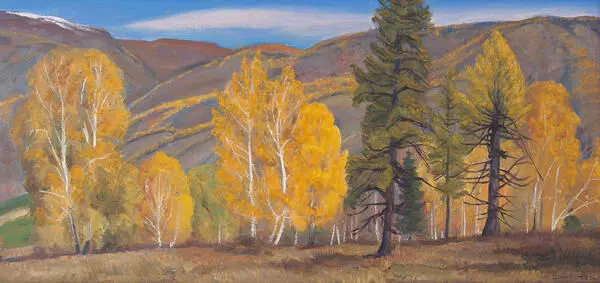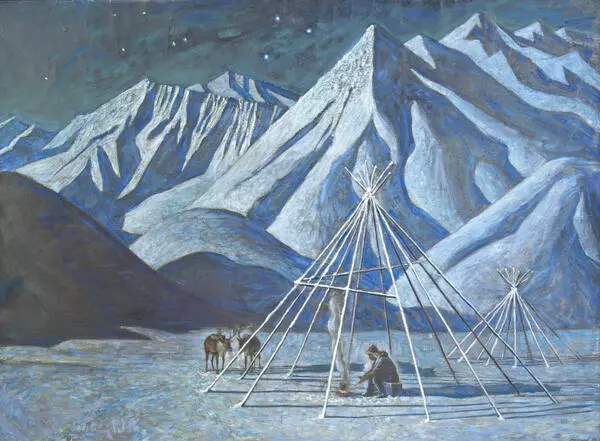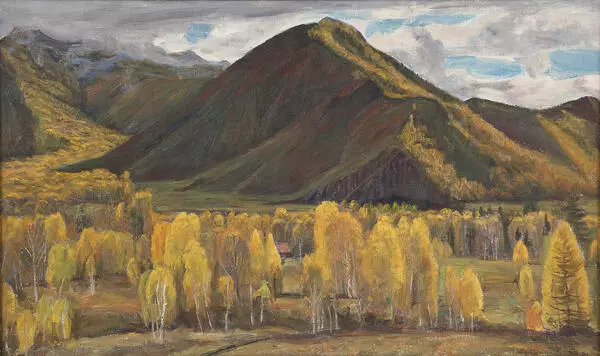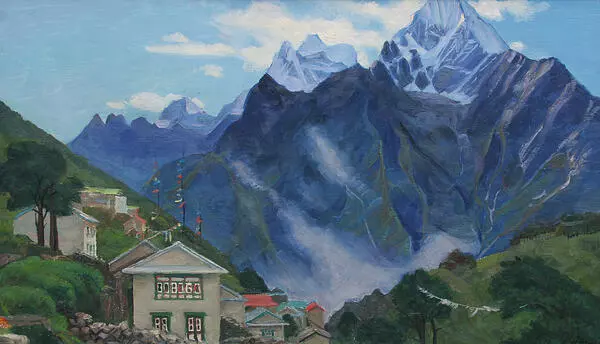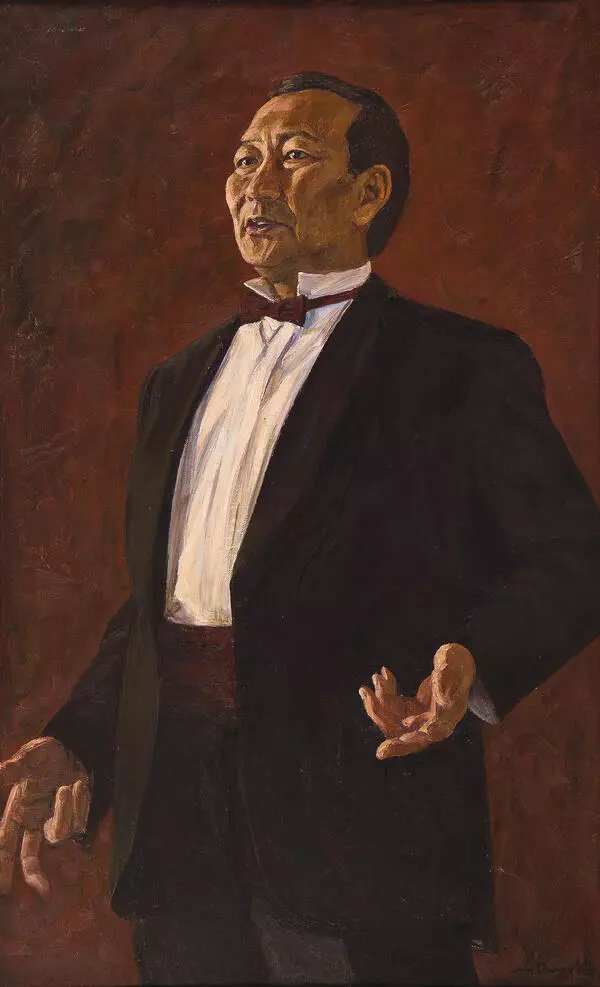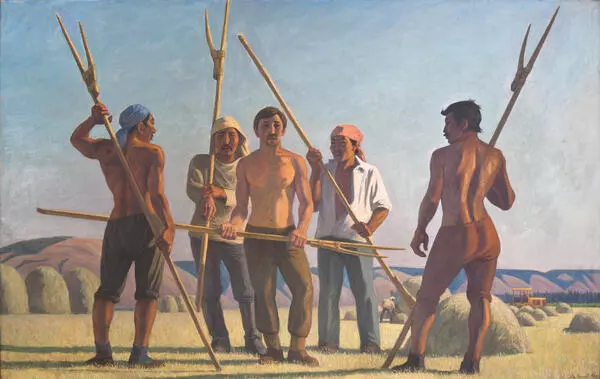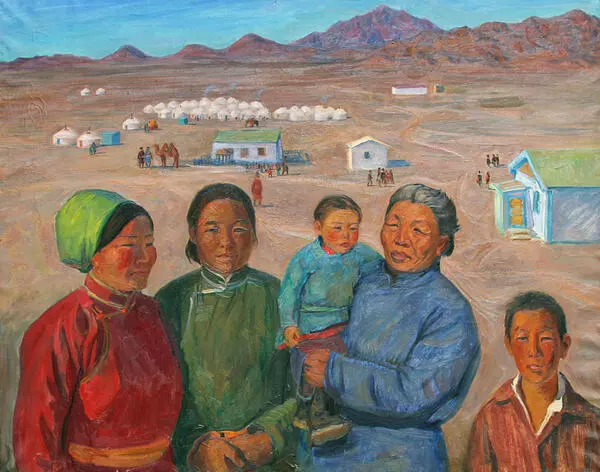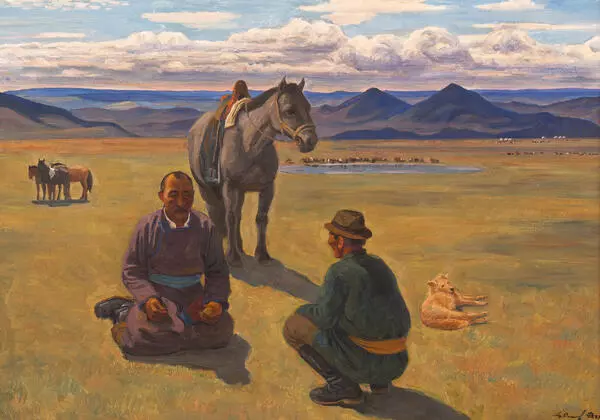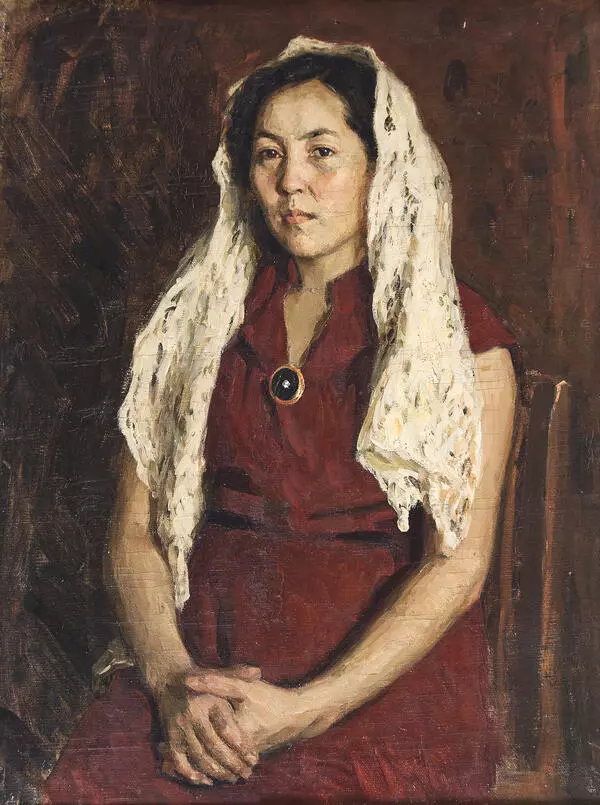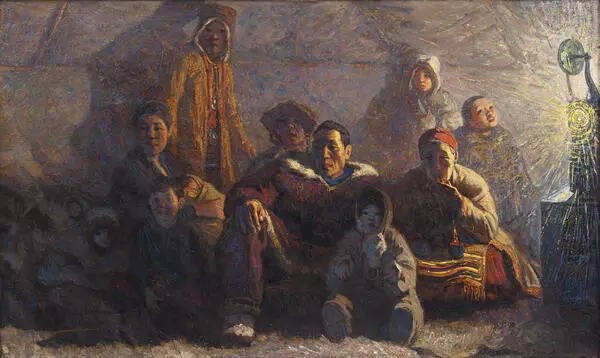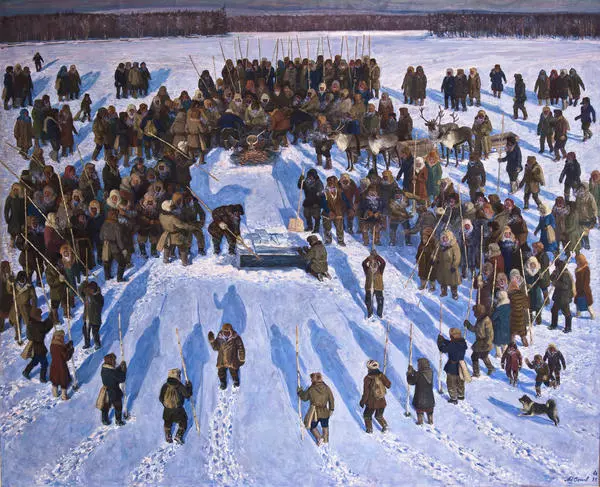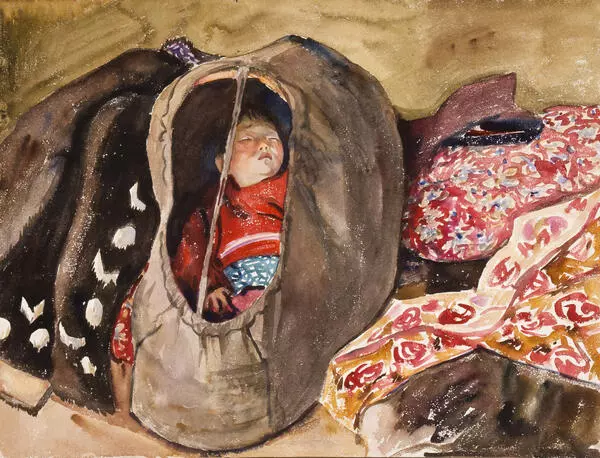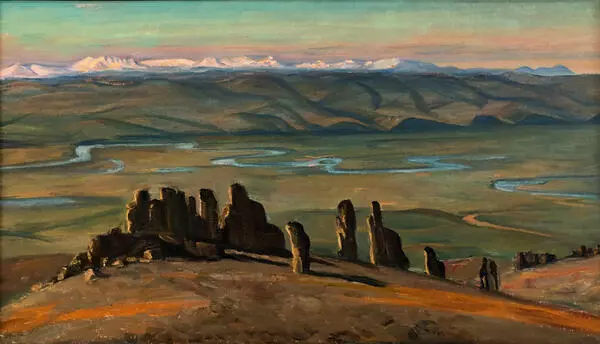The works by the painter Afanasy Osipov could be seen in the collection of the National Art Museum of the Republic of Sakha (Yakutia). He was born on February 28, 1928 in Gorny Ulus in Yakutia. He graduated from high school and technical school and then went to study in Moscow. There he studied painting at the Moscow secondary art school at the Moscow State Academic Art Institute named after V.I. Surikov, and then at the institute itself. His works have been exhibited at national, all-union, and international exhibitions, and are now stored at the State Tretyakov Gallery, the State Russian Museum, as well as in private collections in Russia and abroad.
The geographical range of Osipov’s landscapes is very wide. While on working trips, the artist developed important principles of painting, made discoveries that later enriched the color, drawing, and composition of his future works. Afanasy Osipov’s works of the 2000s are connected with trips to the East. Among them are such paintings as ‘Near Everest’, ‘Sunrise in the Himalayas’, ‘Residents of Kunjum’, ‘Blue Mountains near Kunjum’, and ‘Kunjum’ from the series of paintings ‘Himalayas’. In the Himalayas on the way to Kunjum, the artist spent the night in the village of Namche Bazaar, where on Saturdays the famous bazaar was opened throughout the area. They sell oriental spices, vegetables, fruits, and grain. Namche Bazar is a village in Nepal located at the foot of the highest mountain on the planet, i.e. Mount Everest. The village is very famous for tourists and climbers, because it is located on the road to Mount Everest and has an expanded system of tourist hotels, restaurants, and shops where tourists can relax and prepare for the hike.
The village caught and transferred to the canvas by the master in the intoxicating light mountain haze seems to live its own celestial life lulled by the neighborhood of Tibetan monasteries. Interestingly that being a man of the Soviet era, the master subtly and unobtrusively conveyed the authentic, almost meditative atmosphere of this place. The series ‘Himalayas’ can be attributed to the philosophical works of Afanasy Osipov. Yakutia, Mongolia, Kyrgyzstan, Buryatia, Altai, and the Himalayas appear in the artist’s paintings as a majestic world of steppes and mountains, which preserves the secrets of the birth and migration of the ancient peoples of Asia.
The geographical range of Osipov’s landscapes is very wide. While on working trips, the artist developed important principles of painting, made discoveries that later enriched the color, drawing, and composition of his future works. Afanasy Osipov’s works of the 2000s are connected with trips to the East. Among them are such paintings as ‘Near Everest’, ‘Sunrise in the Himalayas’, ‘Residents of Kunjum’, ‘Blue Mountains near Kunjum’, and ‘Kunjum’ from the series of paintings ‘Himalayas’. In the Himalayas on the way to Kunjum, the artist spent the night in the village of Namche Bazaar, where on Saturdays the famous bazaar was opened throughout the area. They sell oriental spices, vegetables, fruits, and grain. Namche Bazar is a village in Nepal located at the foot of the highest mountain on the planet, i.e. Mount Everest. The village is very famous for tourists and climbers, because it is located on the road to Mount Everest and has an expanded system of tourist hotels, restaurants, and shops where tourists can relax and prepare for the hike.
The village caught and transferred to the canvas by the master in the intoxicating light mountain haze seems to live its own celestial life lulled by the neighborhood of Tibetan monasteries. Interestingly that being a man of the Soviet era, the master subtly and unobtrusively conveyed the authentic, almost meditative atmosphere of this place. The series ‘Himalayas’ can be attributed to the philosophical works of Afanasy Osipov. Yakutia, Mongolia, Kyrgyzstan, Buryatia, Altai, and the Himalayas appear in the artist’s paintings as a majestic world of steppes and mountains, which preserves the secrets of the birth and migration of the ancient peoples of Asia.




